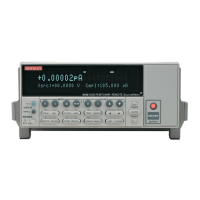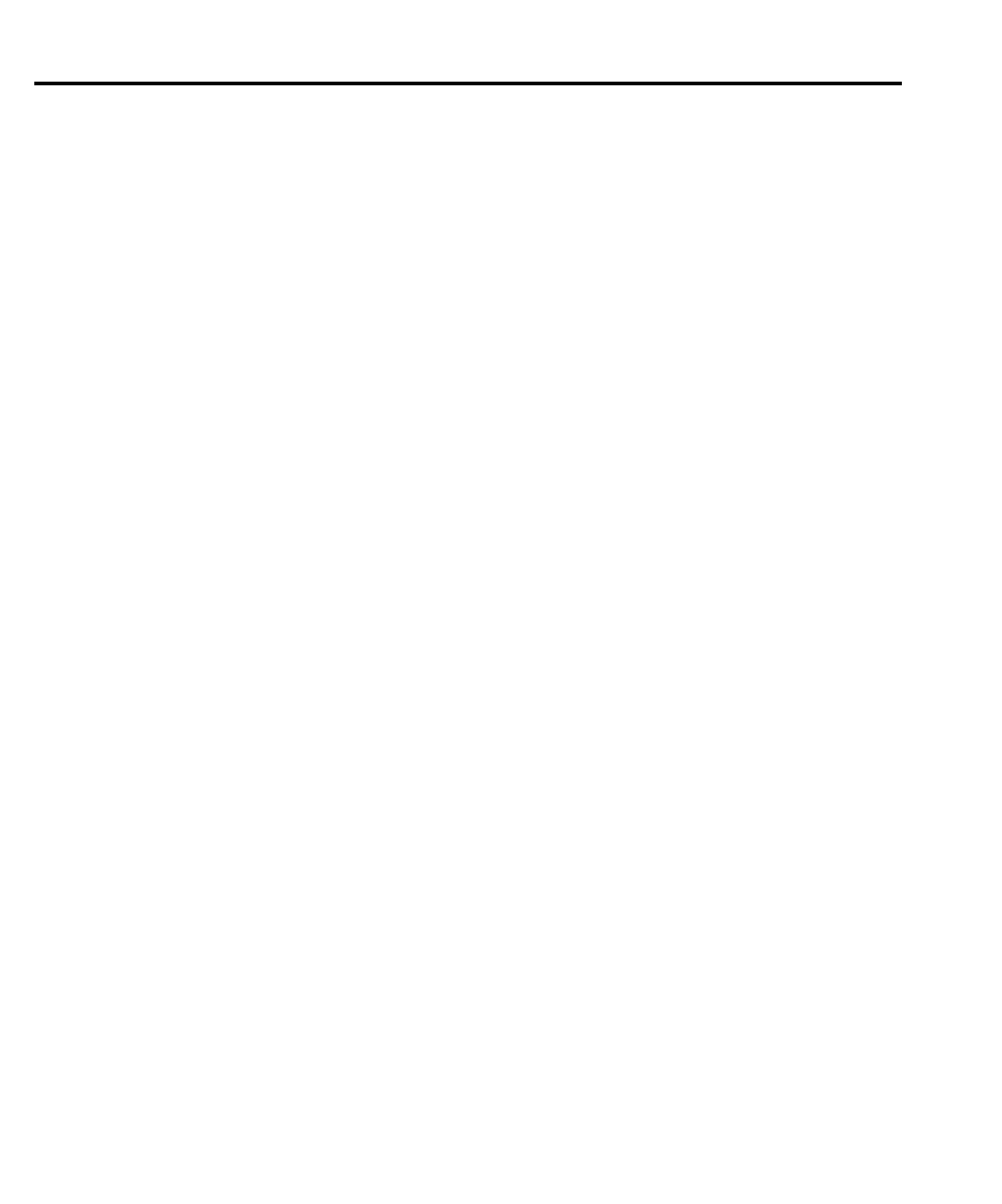11-14 Limit Testing
Digital output clear pattern
After every binning operation, the digital output needs to be reset to a clear pattern, which
serves as a “no action” condition for the component handler.
The SourceMeter can be programmed to automatically clear the digital output after the pass
or fail pattern is sent. With auto-clear, you must specify the required pulse width (delay) for the
pass or fail pattern. When not using auto-clear, you must return the digital output to its clear
pattern from the DIGOUT AUTO CLEAR option of the CONFIG LIMIT menu. This option
also sets the pass/fail pattern and pulse width.
Enabling auto-clear
To enable auto-clear:
1. Press CONFIG then LIMIT.
2. Select DIGOUT, then press ENTER.
3. Choose AUTO CLEAR, then press ENTER.
4. Select ENABLE, then press ENTER.
5. At the prompts, set the auto-clear pulse width (0s to 60s) and clear bit pattern (0 to 15,
4-bit; 0 to 7, 3-bit size). Use EXIT to return to normal display.
Auto-clear timing
The following example timing diagram (Figure 11-9) and discussion explain the relationship
between the digital output lines for auto-clear. This example uses the 3-bit digital output mode,
and uses line 4 as /EOT. That is, line 4 will pulse low to signal “end of test.”
Initially, the four digital output lines are cleared (in this case, they are all set high). Limit
tests start when the start-of-test (SOT) pulse is received from the component handler. When the
testing process is finished, the pass or fail pattern is applied to the digital output. As shown in
the diagram, lines 2, 3, and 4 go low while line 1 remains high.
The pulse width (delay) of the pas/fail pattern can be set from 0 to 60sec (100µsec resolu-
tion) as required by the component handler. Note that the delay specifies the pulse width of line
4. The pulse width of lines 1, 2, and 3 is actually 20µsec longer. Line 4 is skewed because it is
used as the end-of-test (EOT) strobe by category register component handlers. Lines 1, 2, and 3
establish the bit pattern and then 10µsec later the SOT strobe “tells” the handler to read the bit
pattern and perform the binning operation. This 10µsec offset is used to make sure the correct
bit pattern is read by the handler.
After the pass/fail is read by the handler, the digital output returns to the clear pattern.

